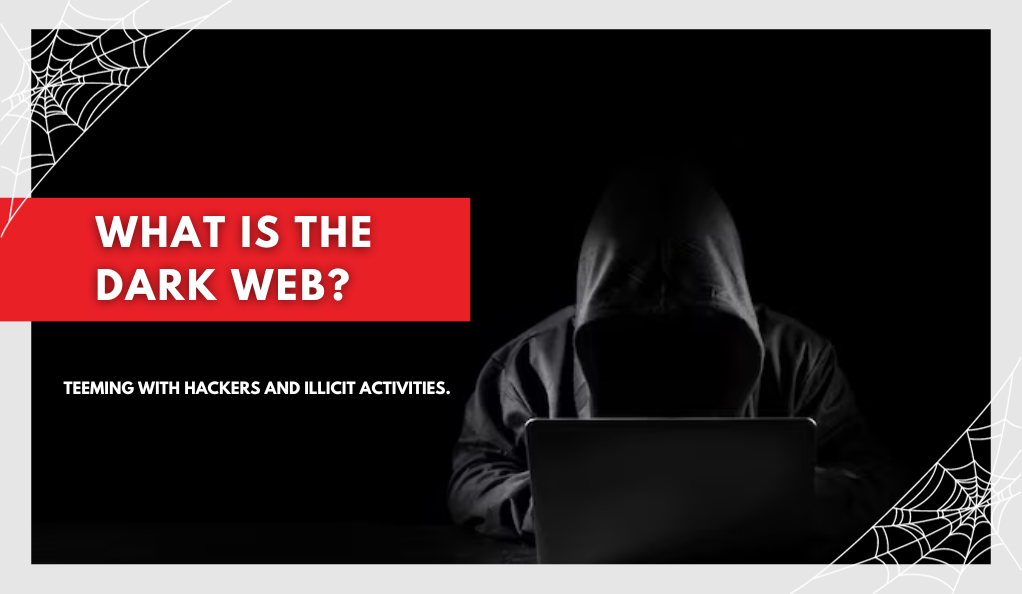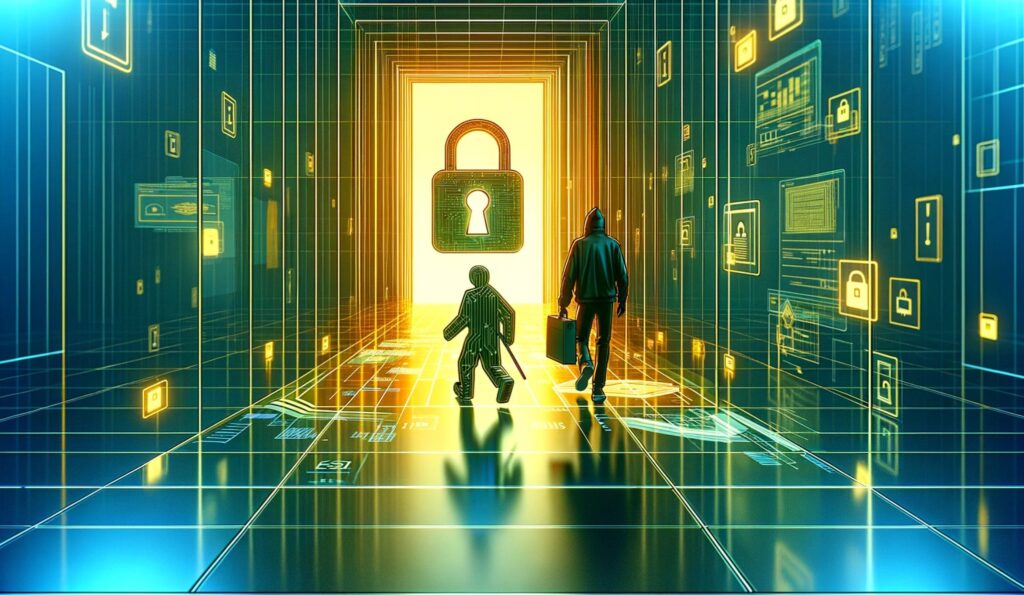The rise of the digital age has brought about innumerable benefits, from instant global communication to vast information access. However, with these advancements comes the underbelly of the internet: the Dark Web. Often misunderstood and shrouded in mystery, the Dark Web is a realm where both benign and malevolent activities occur, far from the watchful eyes of standard search engines and law enforcement. This article seeks to demystify the enigmatic world of the Dark Web, particularly focusing on how hackers plan and execute cyber attacks. By understanding their methodologies, individuals and organizations can better protect themselves against potential threats.
What Exactly is the Dark Web?
At its core, the Dark Web is a portion of the internet that isn’t indexed by traditional search engines like Google or Bing. It’s not a separate entity, but rather a subset of the broader ‘Deep Web’, which encompasses all parts of the internet not indexed by search engines, including benign things like private databases and members-only websites. However, the Dark Web is unique in that it requires specific software, configurations, or authorization to access, making it a hub for both clandestine and legitimate activities.
Why is Understanding the Dark Web Important?
With cyber threats on the rise, understanding the Dark Web is more crucial than ever. Here are some statistics to consider:
| Statistic | Details |
|---|---|
| Number of Dark Web Sites | Over 55,000 active domains, as of 2022 |
| Cybercrime Costs | Estimated to reach $6 trillion globally by 2021 |
| Ransomware Attacks | Up by 300% since 2019, with many originating from Dark Web sources |
| Stolen Data on Sale | Over 15 billion stolen account credentials available for purchase |
Given these startling figures, it becomes evident that the Dark Web isn’t just a shadowy concept from a thriller movie; it’s a tangible, ever-present threat. By understanding its intricacies and the methodologies employed by hackers, individuals and organizations can be better equipped to recognize, thwart, and respond to cyber threats.
What is the Dark Web?

The term “Dark Web” often conjures images of a digital underworld, teeming with hackers and illicit activities. While this isn’t entirely inaccurate, it’s crucial to understand the Dark Web in its entirety, separating myths from realities.
Definition and Key Characteristics
The Dark Web is a segment of the Deep Web that is intentionally hidden and inaccessible through standard web browsers. It’s a collection of websites and forums encrypted and running on overlay networks, making them difficult to locate without specialized tools. Key features include:
- Anonymity: Both users and website operators remain anonymous, thanks to technologies like Tor (The Onion Router) and I2P (Invisible Internet Project). This anonymity is what draws many to the Dark Web, whether for legitimate privacy concerns or malicious intent.
- Specialized Access: To navigate the Dark Web, one requires specific browsers like Tor. These tools bounce internet traffic through several servers worldwide, encrypting data at every step, making the origin virtually untraceable.
- Diverse Content: While notorious for illegal trade (drugs, weapons, and stolen data), the Dark Web also hosts political activists, journalists, and others who need to operate anonymously due to fear of persecution.
Distinction between Deep Web and Dark Web
It’s crucial to draw a clear distinction between the Deep Web and the Dark Web, especially since the terms are frequently used interchangeably, yet they signify different facets of the internet. The Deep Web encompasses all parts of the internet that remain unindexed by standard search engines, covering a vast range of content from private databases and academic journals to members-only websites and personal email accounts, accounting for approximately 90% of the entire internet. On the other hand, the Dark Web is just a minute portion of this Deep Web. While most of the Deep Web is harmless and benign, the Dark Web stands out for its anonymity features, making it a hotspot for various illicit activities.
Anatomy of the Dark Web
Navigating the Dark Web resembles journeying through a digital labyrinth, marked by its intricate layers and concealed pathways. The architecture of this enigmatic space is diverse. The Tor Network, recognized as the most prevalent tool for Dark Web access, hosts websites that end with “.onion” and demands the specialized Tor browser for access. This network’s decentralized nature routes user data across multiple nodes, ensuring user anonymity.
In parallel, the Invisible Internet Project (I2P) offers another layer of secure and anonymous communication, emphasizing the creation of a concealed, internal web network, making it a preferred choice for private interactions. Furthermore, the Dark Web is punctuated by forums and marketplaces, serving as its vibrant hubs. While sites like the infamous, now-defunct Silk Road are known for illicit trade, numerous forums cater to a range of legitimate pursuits, from literature appreciation in book clubs to spirited political debates.
Profiles of Dark Web Users
To truly understand the Dark Web, one must recognize its diverse user base. While it’s easy to label everyone on the Dark Web as hackers or criminals, the reality is far more nuanced. Let’s explore the various profiles of Dark Web users:
Legitimate Users
In countries with strict censorship laws or oppressive regimes, the Dark Web stands as a sanctuary for political activists. It allows them to communicate, coordinate events, and disseminate resources without the looming threat of backlash. Similarly, journalists and whistleblowers, particularly those aiming to unveil corruption or misconduct in high-risk environments, turn to the Dark Web for its promise of anonymity, ensuring their information can be shared without jeopardizing their well-being. Additionally, the Dark Web is not solely a refuge for the oppressed or those in danger. Many cybersecurity professionals and researchers delve into its depths, seeking to grasp the latest cyber threats and trends. This exploration equips them with the knowledge to formulate more robust defense strategies in the ever-evolving realm of cyber threats.
Malicious Entities
- Hackers and Cybercriminals: From solo hackers to organized cybercrime rings, these individuals or groups exploit the Dark Web’s anonymity to plan attacks, sell stolen data, or purchase hacking tools.
- Drug and Weapon Dealers: Illicit marketplaces on the Dark Web facilitate the sale of drugs, weapons, and other illegal goods, drawing sellers and buyers who wish to operate under the radar.
- Human Traffickers: A darker aspect of the Dark Web involves the trafficking of humans, often for forced labor or sexual exploitation.
The Hacker Community: An Inside Look
Hackers, often the most discussed Dark Web users, are not a monolithic group. They come with varied motivations and skill sets:
- Black Hat Hackers: These are the ‘bad guys’ of the hacking world. Motivated by personal gain, they engage in illegal activities, from stealing data to launching cyberattacks.
- White Hat Hackers: Often employed by organizations, these ethical hackers use their skills to identify and fix security vulnerabilities, working within legal boundaries.
- Grey Hat Hackers: Operating in the moral grey area, these hackers may break the law but often with noble intentions, such as exposing a security flaw to the public.
- Hacktivists: Motivated by political or social causes, hacktivists use their skills to protest or advocate for change, often targeting governments or corporations.
Hacker Modus Operandi

To defend against a potential adversary, one must first understand their tactics. In the realm of the Dark Web, hackers have developed a set of methodologies that enable them to breach security systems, steal data, and evade detection. By understanding their modus operandi, we can be better prepared to counteract their efforts.
The Planning Phase: Target Selection and Reconnaissance
- Target Selection: Hackers often choose their targets based on potential profit, vulnerability, or ideological reasons. Some may target financial institutions for monetary gain, while hacktivists might focus on political organizations.
- Reconnaissance: Before launching an attack, hackers gather as much information as possible about their target. This can include studying an organization’s online presence, identifying employees, and understanding the technologies in use.
Exploitation: Finding Vulnerabilities and Crafting Attack Vectors
- Vulnerability Scanning: Using specialized tools, hackers scan systems to identify weak points. These vulnerabilities can range from outdated software to misconfigured servers.
- Phishing and Social Engineering: Often, the weakest link in security is the human element. Hackers craft deceptive emails or messages to trick individuals into revealing sensitive information or unknowingly installing malware.
Execution: Deploying Malware, Ransomware, or Other Malicious Tools
- Malware Deployment: Once a vulnerability is identified, hackers deploy malicious software to exploit it. This can include viruses, worms, or trojans.
- Ransomware Attacks: A particularly malicious form of attack, ransomware encrypts a user’s data, with the hacker demanding payment (usually in cryptocurrency) to unlock it.
- DDoS Attacks: By overwhelming a system with traffic, hackers can render websites or online services inoperable, often as a distraction or form of protest.
Covering Tracks
- Using VPNs and Proxies: To remain anonymous, hackers route their internet traffic through various servers worldwide, masking their true location.
- Data Laundering: Stolen data, especially financial information, is often “cleaned” through a series of transactions, making it hard to trace back to the original theft.
Dark Web Marketplaces and Forums
The Dark Web is more than just a secretive planning ground; it thrives as a vibrant marketplace where a plethora of data, tools, and services exchange hands. While platforms like the infamous Silk Road are well-known, others like Dream Market, AlphaBay, and Empire Market have also risen to prominence over time. These marketplaces not only trade in drugs and weapons but also deal in a wide variety of digital goods, including stolen credit card details, compromised account credentials, and malicious software. Additionally, the Dark Web is home to numerous forums where hackers gather. These forums serve as central knowledge hubs, where members share expertise, discuss the latest cyber trends, and collaborate on various projects, often enriched with tutorials, valuable advice, and tool reviews.
Countermeasures and Defense
While the Dark Web presents a myriad of threats, it’s not an undefeatable entity. By adopting proactive strategies and understanding the cyber landscape, individuals and organizations can effectively defend against potential attacks sourced from this digital underworld.
Best Practices for Individual and Organizational Protection
- Regular Updates: Keeping software and systems updated is crucial. Hackers often exploit known vulnerabilities in outdated software, making regular updates a frontline defense.
- Multi-Factor Authentication (MFA): By requiring multiple forms of identification before granting access, MFA adds an extra layer of security, especially for sensitive accounts.
- Educate and Train: Regular training sessions on cybersecurity best practices can help employees recognize potential threats, such as phishing emails or suspicious downloads.
Role of Cybersecurity Professionals and Threat Intelligence
By actively monitoring the Dark Web and various cyber threat platforms, organizations can acquire valuable insights into looming threats, enabling a proactive stance against potential attacks. Should a breach happen, it’s imperative to have a clear incident response plan ready. Such a plan not only minimizes the overall damage but also outlines crucial steps, from isolating compromised systems to notifying concerned stakeholders and initiating appropriate recovery procedures. Additionally, employing ethical hackers, often termed “white hat” hackers, proves beneficial. These professionals, viewing defense as a form of offense, rigorously test an organization’s cybersecurity measures, pinpoint vulnerabilities, and subsequently offer robust fortification recommendations.
Advanced Security Solutions
Intrusion Detection Systems (IDS) play a crucial role in cybersecurity by monitoring network traffic for any suspicious activities. When potential breaches are detected, these systems promptly send out alerts. Complementing this, firewalls and antivirus software serve as foundational tools in any cybersecurity strategy. Though they might seem basic, their primary role is to block malicious traffic and software, acting as the first line of defense. Furthermore, the practice of data encryption is paramount. By encrypting sensitive information, even if malicious entities manage to steal the data, it remains indecipherable, rendering it useless to hackers.
The Legal and Ethical Implications
With the rising significance of the Dark Web in the realm of cybercrime, there has been a noticeable shift in the legal framework to address and take action against related offenses. Globally, law enforcement agencies have intensified their efforts to monitor and prosecute activities on the Dark Web, with operations such as the takedown of the Silk Road standing as a testament to their dedication to curbing digital crime.
On another note, the domain of ethical hacking, although operating within legal parameters, often finds itself in a gray area. Ethical hackers, despite their noble intentions, must tread carefully. Without proper authorization, their actions can inadvertently lead to legal consequences. Hence, the importance of well-defined contracts, clear scopes of work, and a mutual understanding between these hackers and the organizations they work with cannot be overstated.
Conclusion
The Dark Web, a reflection of our digital society, encompasses both the commendable and the nefarious. Its existence, though often associated with illicit activities, also serves as a beacon for free speech and anonymity, especially in oppressive environments. As this intricate part of the internet continues to evolve, it’s essential for individuals and organizations to remain informed, understanding its dynamics to proactively address potential threats and safeguard their digital presence.
In navigating the challenges and opportunities of the digital age, a balanced perspective on platforms like the Dark Web is vital. By fostering a culture of awareness and education, we can ensure that technology, in all its forms, is harnessed for positive impact, empowering individuals and promoting ethical digital interactions.








